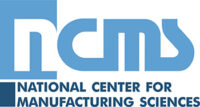CTMA Project #: 140503
Problem: Current aircraft procured by NAVAIR are designed and fabricated utilizing state-of-the-art technology consisting of computer-aided design, computer-aided engineering, and computer-aided manufacturing (CAD/CAM/CAE). The design definition of these aircraft are created and delivered as 3D solid model-based definition in electronic media. The current state of technology used within the Fleet Readiness Centers (FRCs) makes it impossible for the responsible agencies to provide effective sustainability. This is especially true once the aircraft are deployed to the fleet due to the lack of infrastructure, (to host, maintain, control, archive, manage, and utilize these models). Additionally, there is excessive variation in the quality of the solid models. Each data set acquired from the OEMs requires a data healing process. This problem is common at all FRCs.
Existing NAVAIR logistics, engineering, production and data management information systems used for sustainment are antiquated. The lack of connectivity within the depots and between them prohibits the ability to provide full Depot level repair, overhaul and maintenance sustainability. Government entities that are required to support these aircraft create local workaround processes to manage the 3D data. They do not have robust, consistent configuration management. This problem perpetuates the development of unreliable technical data that can cause problems with the fabrication of flight-critical parts within the depots.
Finally, the FRCs need a capability in place to facilitate essential 3D data management practices. The current capability forces each local engineering support activity to translate the 3D data back to 2D blueprint-type paper-based instructions for the depot level maintainers to perform their work. The lack of a comprehensive configuration managed solution that can accommodate the Manufacturing Model Management System (3MS) process, (developed at FRC Southwest) has caused a large number of parts to be scrapped or reworked. Over the last 5 years, this has caused approximately $2M of unnecessary expenses and an excessive turn-around time to obtain locally manufactured replacement parts for the F-18 fleet.
Benefit: Participating FRC organizations will gain demonstrable capabilities to provide full depot level in-service support of solid model-based aircraft designed systems, such as F-18 Super Hornet, V-22, CH-53, BAMS, etc. by making 3D data readily accessible, shared and usable. Access to FRC Southwest’s 3MS environment will reduce cycle time of parts fabrication and repair design turnaround time by making previous analyses readily searchable and available.
Currently, all 2D designs are required to be translated to 3D and no appropriate process standards exist resulting in the fabrication of parts that do not conform to original engineering design intent resulting in substantial manufacturing scrap rates throughout DoD.
- It is estimated that this project will provide a minimum $2M in savings in scrapped, or reworked manufactured parts in the next 5 years at FRC Southwest, with possible $6M+ in savings across the three FRCs.
Capabilities developed in this project will be applicable to existing DoD manufacturing and maintenance processes. The payback could be magnified substantially if leveraged within other cross-service depots as well as DLA.
- FRC engineering activities will be able to increase product cycle time and decrease costs by a minimum of 20% by creating efficiencies in data sharing to prevent repeating analysis that have previously been performed. This capability does not exist currently in a shareable and searchable state across the NAVAIR engineering community.
Based on a CTMA Challenge award, the resulting capability will be configured to measure cycle time and costs at each cost center and will be utilized for continuous improvement processes. This data will be compared to legacy methods to provide measurable costs and cycle time enhancements.
Solution/Approach: The system proposed is a combination of processes and tools to share a subset of F/A-18 structural repairs and component reverse engineering. The project will demonstrate efficient technical data flow across the FRC Southwest, FRC Southeast, and FRC East. The result of this project will be an enhanced maintenance and logistics process creating significantly shorter lead times that will provide data to stakeholders in an organized format and ultimately support Navy’s goal for Fleet Readiness.
FRC Southwest will function as the data center, through the RDT&E network with the ability to share the data across to NMCI by achieving connectivity between RDT&E network and the NMCI network. A web-based client will be installed in the NMCI network, which will allow for access to validated 3D data by FRC East and FRC Southeast using a standard managed business process for security and traceability.
Impact on Warfighter:
- Reduced cycle time for complex manufacturing process.
- Significant cost savings.
- More effective allocation of resources.
- Improved change and management process.
DOD Participation:
- U.S. Navy (FRC Southwest)
- U.S. Navy (FRC Southeast)
- U.S. Navy (FRC East)
Industry Participation:
- Siemens PLM
- Spatial Integrated Systems (SIS)
- NCMS




